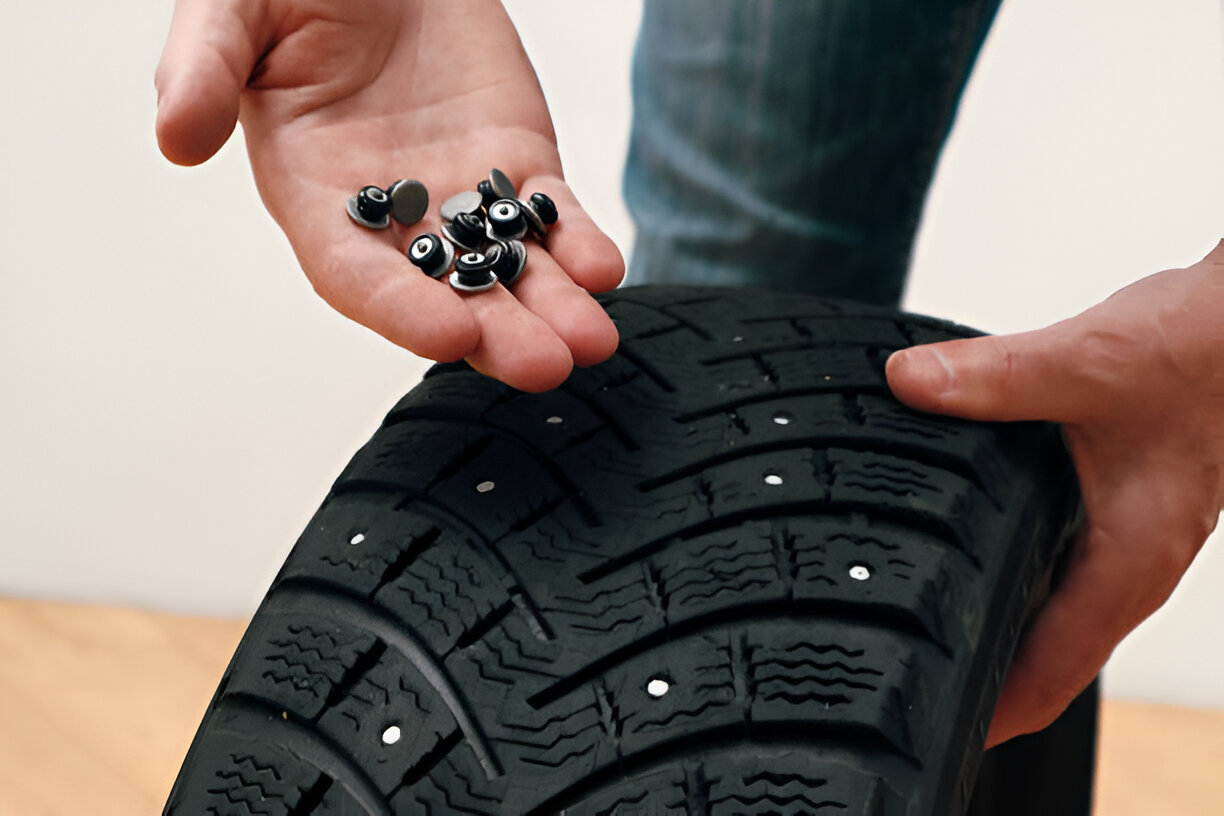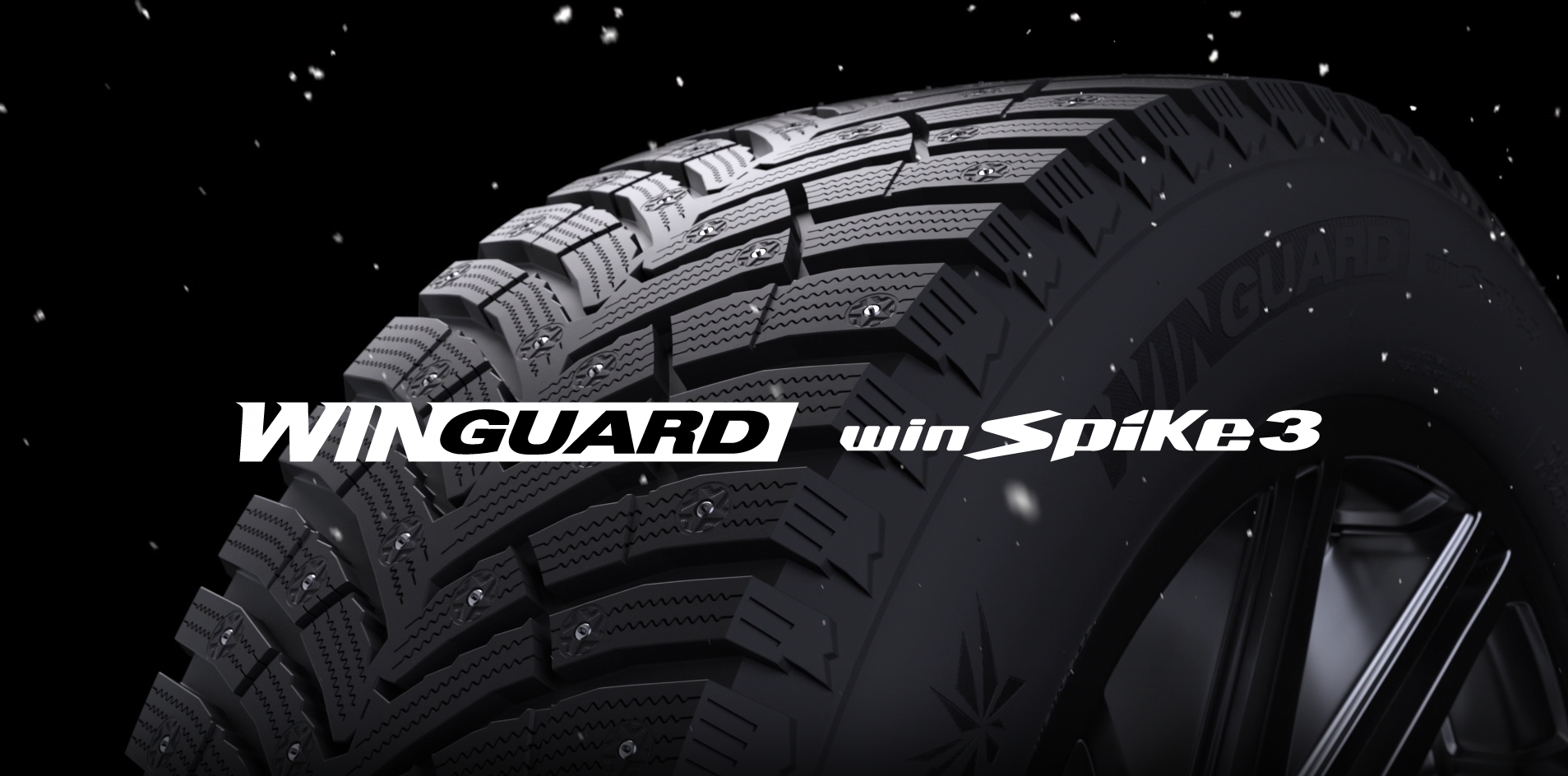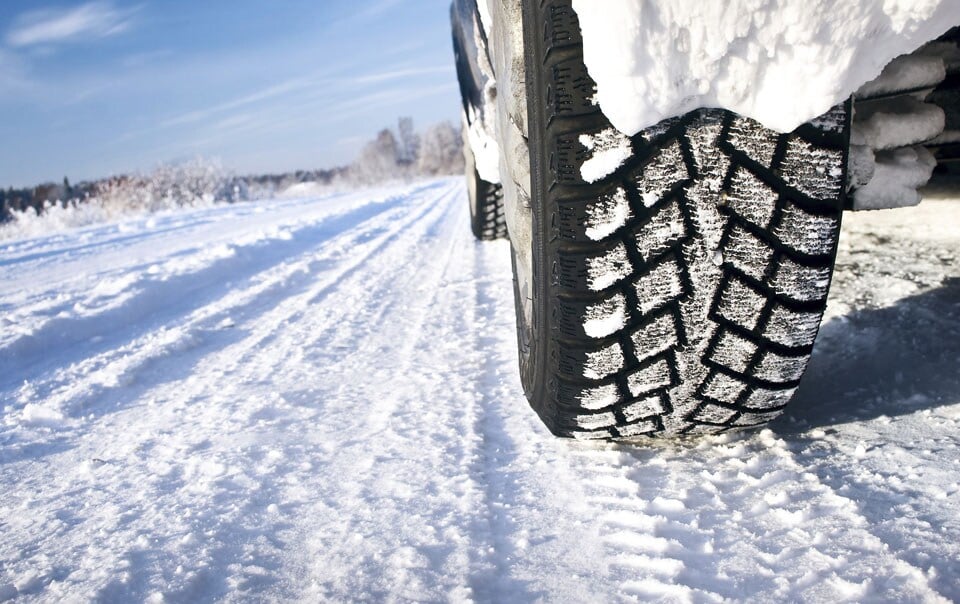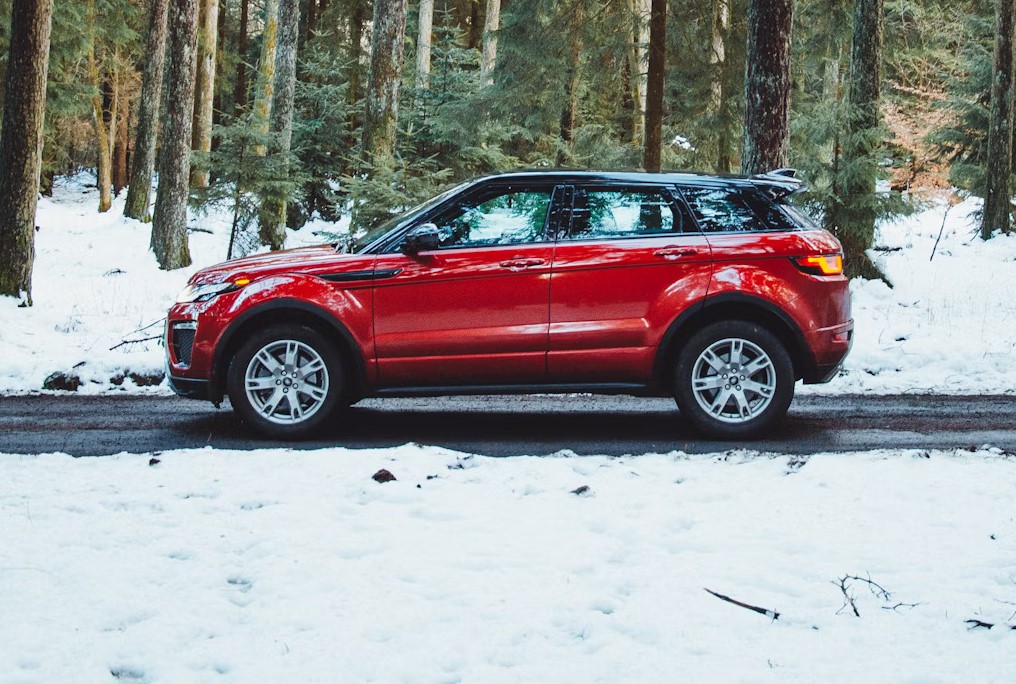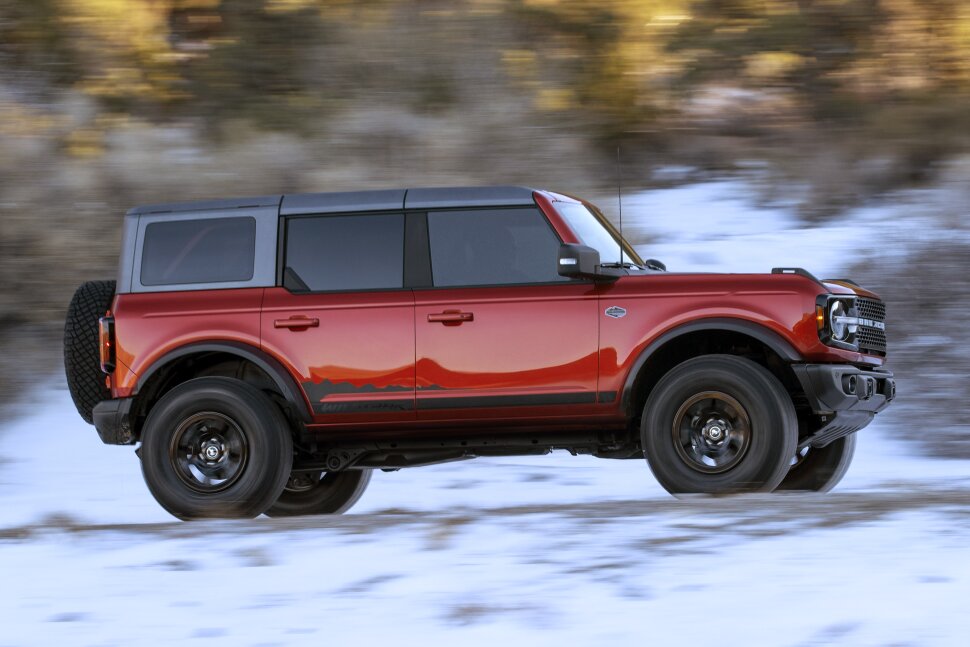Last Updated on November 1, 2024
Are Studded Winter Tires Worth It? Pros and Cons Explained
Since the first winter tire was invented in the early 1930s, tire companies have been on a relentless quest for grip and performance in harsh conditions. But winter tires, as capable as they are, are no match for ice and slippery conditions. So, what do you do when the roads are covered in ice, temperatures are well below freezing, and winds are worsening the conditions? Simply put, studded tires are the only solution for these situations. But what are the studded tires, and how do they perform? Here is a detailed answer to this and many other questions.
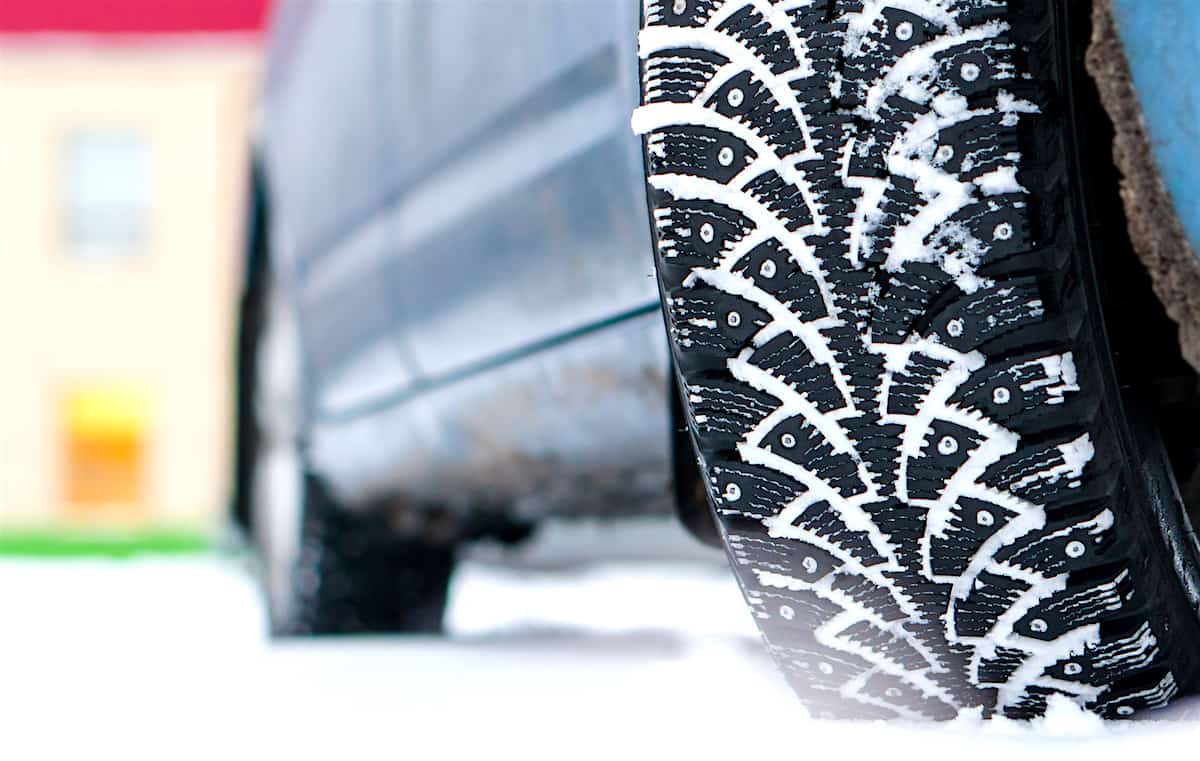
What Are Studded Winter Tires?
Studded winter tires are designed to enhance traction on icy and snowy surfaces by embedding small metal or plastic studs in the tire’s tread. These studs bite into the ice, providing better grip than non-studded winter tires, especially in freezing temperatures and on icy roads. The studs typically protrude a few millimeters from the tire, and their sharp edges help create friction against the slippery surface. Studded tires are specifically engineered to perform in sub-zero temperatures, where even snow can turn to a hard, icy surface, making ordinary tires inadequate for safe driving.
Types of Studs for Winter Tires
1) Metal Studs
Traditional studs are usually made of tungsten carbide, a rigid metal, to resist wear and maintain performance on ice. These studs are embedded into the tire’s tread during manufacturing. The metal tips dig into the ice, creating a secure grip, and as they rotate with the tire, they bite into the surface with each revolution. These studs are durable and practical but can damage dry pavement when the road isn’t icy.
2) Retractable Studs
Retractable studs allow drivers to adjust their tire performance depending on road conditions. These studs can be engaged when necessary for icy roads and retracted when driving on bare or wet asphalt. This flexibility is one of the significant advantages of retractable studs, as they offer both the benefits of studded and non-studded tires in a single set. However, they tend to be more expensive and complex to maintain.
3) Rubberized or Plastic Studs
Rubber or polyurethane studs are softer and more flexible than traditional metal studs. They are designed to reduce road surface damage while offering a better grip on ice. However, they typically don’t perform as well as metal studs on extremely icy roads. However, they can be a good compromise for regions where studded tires are only occasionally necessary.
Studded Tires Legislation
Due to their aggressive nature, studded tires are subject to various laws and regulations depending on where you live. These regulations balance road safety in winter with preserving road surfaces in warmer weather.
1) Seasonal Restrictions
In many regions, studded tires are only allowed during specific times of the year. For example, drivers can only use studded tires from October or November through April in many parts of the US. The rest of the year, studded tires are prohibited because of the damage they can cause to dry roads.
2) Regional Variations
In the US, states like Washington, Oregon, and Colorado permit studded tire use during the winter. In contrast, others, like Minnesota, only allow studded tires under specific conditions or for particular vehicle types, such as emergency vehicles. Meanwhile, states like Florida and Hawaii ban studded tires altogether, as they are unnecessary for the local climate.
Pros of Studded Winter Tires
1) Superior Traction on Ice
The main advantage of studded tires is their outstanding performance on icy roads. The metal studs dig into the ice, providing traction far surpassing that of non-studded tires or all-season tires. This increased grip can be life-saving in extreme winter conditions, reducing the chances of skidding and improving overall vehicle control.
2) Enhanced Braking Power on Ice
In addition to better acceleration and cornering on ice, studded tires significantly improve braking performance. The studs provide the necessary friction to reduce braking distances on ice-covered roads. This benefit is crucial when driving downhill or when sudden stops are required, helping drivers maintain better vehicle control in emergencies.
3) Effective on Hard-Packed Snow
In addition to ice, studded tires excel on hard-packed snow, which can be just as slippery. Non-studded winter tires tend to lose traction in these conditions, whereas the studs can penetrate the surface to offer better stability and grip.
Cons of Studded Winter Tires
1) Too Aggressive For Roads
One of the most significant downsides of studded tires is the damage they cause to roads, mainly when used on dry or wet asphalt. The metal studs create tiny grooves and ruts in the pavement, which can degrade road quality over time. This damage is costly to repair and is a significant reason why many regions regulate or ban the use of studded tires outside of winter months.
2) Increased Noise
Studded tires are noticeably louder than their non-studded counterparts. The metal studs create additional road noise, which can bother drivers, passengers, and pedestrians. This noise can also increase fatigue during long trips, making studded tires less desirable for everyday driving in inconsistent snow and ice areas.
3) Reduced Performance on Dry or Wet Roads
While studded tires are fantastic on ice, they perform poorly on dry or wet pavement. The studs reduce the tire’s contact with the road surface, leading to longer braking distances and less stability. This reduction in performance can become dangerous in areas where road conditions frequently alternate between icy and dry.
4) Higher Costs
Studded tires are more expensive than non-studded winter tires, especially when factoring in installation, maintenance, and replacement of worn studs. Drivers also need to swap out their tires when winter ends, requiring additional storage space or regular tire changes, which adds to the cost.
5) Environmental Concerns
Studded tires generate more wear and tear on road surfaces, contributing to air pollution in the form of delicate particulate matter. This is a concern in regions where road damage is significant, as the dust created by deteriorating roads can negatively impact air quality.
Conclusion
Studded winter tires provide grip and safety on icy and hard-packed snow surfaces. Still, they also have downsides like road damage, noise, and reduced performance on dry pavement. Whether you invest in studded winter tires ultimately depends on where you live, and the type of winter driving you do. If you regularly encounter icy, treacherous roads, studded tires may be the best option for maximizing safety. They provide unmatched traction on ice and can make a huge difference in your vehicle’s performance and braking capabilities.
-
Automotive Specialist
-
Writer
-
Writer




